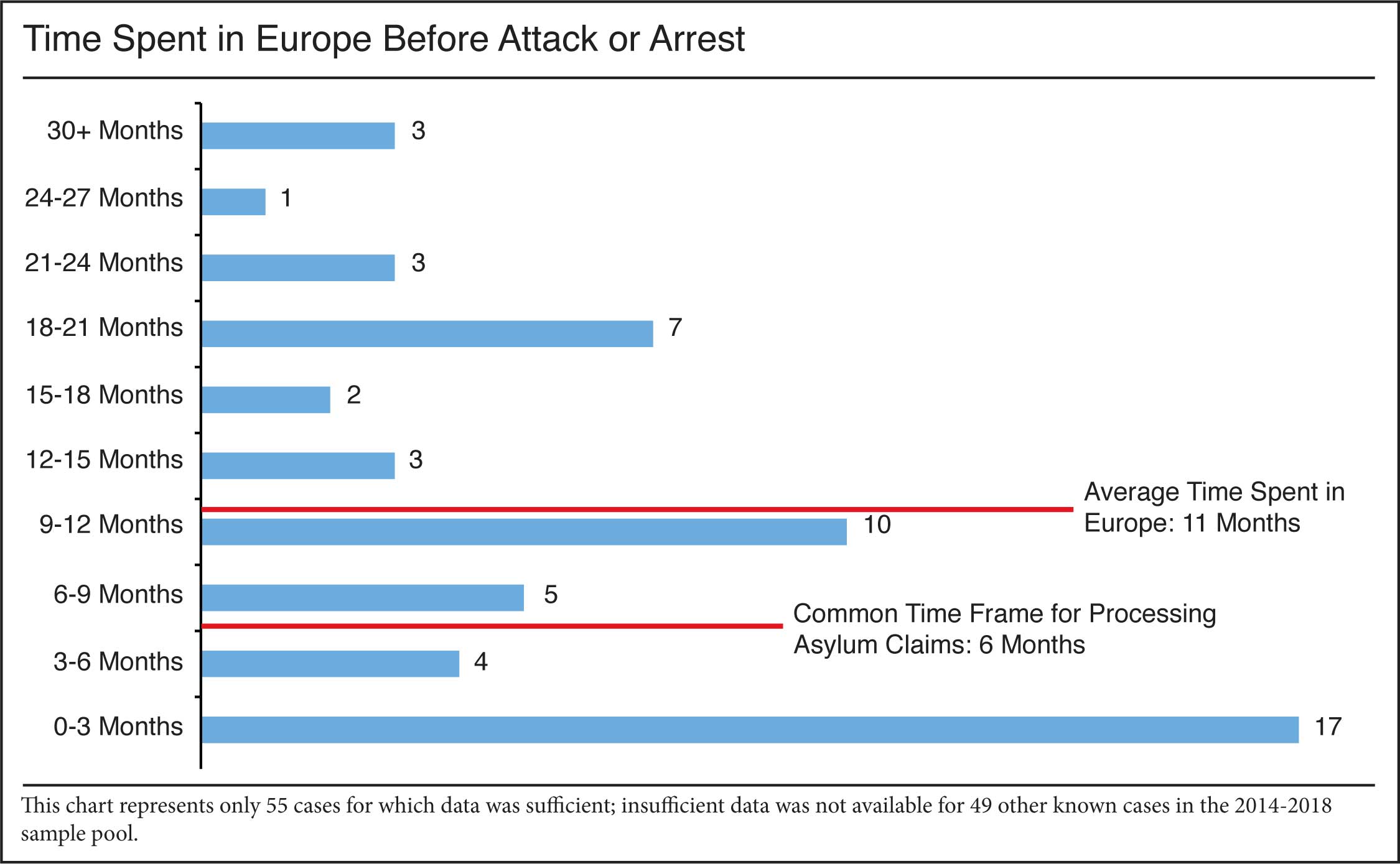4 arrests for smuggling over 600 migrants across the Western Balkans – Europol

Report on the Dismantlement of a Migrant Smuggling Network and its Alignment with Sustainable Development Goals
1. Executive Summary
A coordinated international investigation involving authorities from Bosnia and Herzegovina, Croatia, and Slovenia, under the framework of Europol’s Operational Task Force (OTF), has resulted in the dismantling of a significant organized criminal network. This network was responsible for smuggling over 600 migrants along the Western Balkans route. This law enforcement action represents a direct contribution to the United Nations Sustainable Development Goals (SDGs), particularly those concerning peace, justice, decent work, and the reduction of inequalities.
2. Operational Overview
- Objective: To dismantle a criminal organization facilitating the irregular migration of individuals from Bosnia and Herzegovina towards European Union countries.
- Participating Nations: Bosnia and Herzegovina, Croatia, Slovenia.
- Coordinating Agency: Europol.
- Criminal Modus Operandi: The network leveraged encrypted messaging applications to coordinate logistics and evade law enforcement detection.
3. Contribution to SDG 16: Peace, Justice and Strong Institutions
The operation directly supports the advancement of SDG 16 by combating organized crime and strengthening international justice mechanisms.
- Target 16.4 (Combat organized crime): By dismantling this network, the operation actively reduces illicit financial flows derived from human smuggling and weakens a key node of transnational organized crime.
- Target 16.a (Strengthen international cooperation): The success of the investigation highlights the effectiveness of cross-border cooperation between judicial and law enforcement authorities, a core principle for building institutional capacity to combat global crime.
- Target 16.2 (End abuse and exploitation): The intervention protects vulnerable migrants from the abuse, violence, and exploitation inherent in criminal smuggling operations.
4. Impact on SDG 8: Decent Work and Economic Growth
This action addresses critical targets within SDG 8 related to the eradication of modern slavery and human trafficking.
- Target 8.7 (Eradicate forced labour and human trafficking): Migrant smuggling networks are often precursors to human trafficking and forced labor. Disrupting these illegal pathways is a crucial preventative measure to protect individuals from being forced into exploitative situations, thereby upholding the goal of decent work for all.
5. Addressing SDG 10: Reduced Inequalities
The operation aligns with the principles of SDG 10 by targeting the criminal exploitation of vulnerable populations and promoting safer migration.
- Target 10.7 (Facilitate orderly, safe, regular and responsible migration): Criminal networks undermine safe and orderly migration by creating dangerous, unregulated channels. The dismantlement of this network is a fundamental step towards ensuring that migration is managed through safe and dignified processes, rather than by exploitative criminal enterprises.
6. Conclusive Results of the Operation
- The successful dismantling of the criminal network active across the Western Balkans.
- The arrest of four key members of the organization.
- The disruption of a significant route used for smuggling over 600 migrants.
- A significant blow to the operational capacity of organized crime in the region, reinforcing the rule of law and contributing to global security and sustainable development.
Analysis of Sustainable Development Goals in the Article
1. Which SDGs are addressed or connected to the issues highlighted in the article?
The article on dismantling a migrant smuggling network in the Western Balkans connects to several Sustainable Development Goals (SDGs) that focus on justice, inequality, and decent work. The primary themes of combating organized crime, protecting vulnerable migrants, and fostering international cooperation are central to these goals.
- SDG 16: Peace, Justice and Strong Institutions: This is the most directly relevant SDG. The article details a successful law enforcement operation involving multiple countries (Bosnia and Herzegovina, Croatia, Slovenia) and an international body (Europol) to dismantle a criminal network. This action directly contributes to building effective, accountable, and inclusive institutions at all levels and combating organized crime.
- SDG 10: Reduced Inequalities: This goal includes targets related to facilitating orderly, safe, regular, and responsible migration. The criminal network’s activities represent the opposite: unsafe and irregular migration. By disrupting these smuggling operations, authorities are working to protect migrants from exploitation and manage migration flows, which is a key aspect of reducing inequalities faced by migrants.
- SDG 8: Decent Work and Economic Growth: This SDG aims to eradicate forced labor, end modern slavery, and human trafficking. Migrant smuggling is intrinsically linked to human trafficking, as smuggled individuals are extremely vulnerable to exploitation, forced labor, and other forms of modern slavery upon reaching their destinations. Tackling the smuggling networks is a crucial step in preventing human trafficking.
2. What specific targets under those SDGs can be identified based on the article’s content?
Based on the actions and issues described, several specific SDG targets can be identified:
- Target 16.4: By 2030, significantly reduce illicit financial and arms flows, strengthen the recovery and return of stolen assets and combat all forms of organized crime.
- Explanation: The article’s core subject is the “dismantling of criminal network smuggling migrants.” This is a direct action against organized crime, as explicitly mentioned in the target.
- Target 16.a: Strengthen relevant national institutions, including through international cooperation, to build capacity at all levels, in particular in developing countries, to prevent violence and combat terrorism and crime.
- Explanation: The operation is described as “A large investigation, involving law enforcement and judicial authorities from Bosnia and Herzegovina, Croatia and Slovenia” and conducted under “Europol’s dedicated Operational Task Force (OTF).” This exemplifies the international cooperation required to combat transnational crime, as specified in the target.
- Target 10.7: Facilitate orderly, safe, regular and responsible migration and mobility of people, including through the implementation of planned and well-managed migration policies.
- Explanation: The criminal network facilitates unsafe and irregular migration. The law enforcement action to dismantle this network is a measure to counter these dangerous migration channels, thereby contributing indirectly to the goal of making migration safer and more orderly by eliminating criminal elements.
- Target 8.7: Take immediate and effective measures to eradicate forced labour, end modern slavery and human trafficking…
- Explanation: Migrant smuggling creates a highly vulnerable population susceptible to human trafficking and exploitation. By arresting smugglers and dismantling their networks, authorities are taking a critical preventative measure against the potential for these “over 600 migrants” to be forced into modern slavery or other forms of exploitation.
3. Are there any indicators mentioned or implied in the article that can be used to measure progress towards the identified targets?
The article provides specific data points and facts that can be used as indicators to measure progress towards the identified targets, even if official indicator codes are not mentioned.
- Indicator for Target 16.4 (Combat organized crime): The number of organized crime groups dismantled and the number of individuals arrested.
- Evidence from the article: The text explicitly states the “dismantling of criminal network” and “4 arrests,” with “Further arrests” made in previous actions. These figures serve as direct quantitative measures of success in combating organized crime.
- Indicator for Target 10.7 (Facilitate safe migration): The number of people detected and reported as victims of migrant smuggling.
- Evidence from the article: The mention of “smuggling over 600 migrants” provides a quantifiable measure of the scale of unsafe, irregular migration facilitated by this specific network. A reduction in such numbers following law enforcement actions would indicate progress.
- Indicator for Target 16.a (International cooperation): The number of joint law enforcement operations or formal cooperation agreements to combat transnational crime.
- Evidence from the article: The operation itself, described as an “investigation, involving law enforcement and judicial authorities from Bosnia and Herzegovina, Croatia and Slovenia” under “Europol’s dedicated Operational Task Force (OTF),” serves as a qualitative and quantitative indicator of successful international cooperation.
4. Table of SDGs, Targets, and Indicators
| SDGs | Targets | Indicators Identified in the Article |
|---|---|---|
| SDG 16: Peace, Justice and Strong Institutions |
16.4: Combat all forms of organized crime.
16.a: Strengthen international cooperation to combat crime. |
Number of criminal networks dismantled (1 in this case). Number of arrests related to organized crime (4+). Existence of a joint international operation (The OTF involving 3 countries and Europol). |
| SDG 10: Reduced Inequalities | 10.7: Facilitate orderly, safe, regular and responsible migration. | Number of people identified as being smuggled through irregular channels (over 600). |
| SDG 8: Decent Work and Economic Growth | 8.7: Take immediate and effective measures to eradicate forced labour, end modern slavery and human trafficking. | Number of preventative actions taken against potential human trafficking (the dismantling of the smuggling network is a key preventative action). |
Source: europol.europa.eu

What is Your Reaction?
 Like
0
Like
0
 Dislike
0
Dislike
0
 Love
0
Love
0
 Funny
0
Funny
0
 Angry
0
Angry
0
 Sad
0
Sad
0
 Wow
0
Wow
0



















































.jpg.webp?itok=0ZsAnae9#)


























